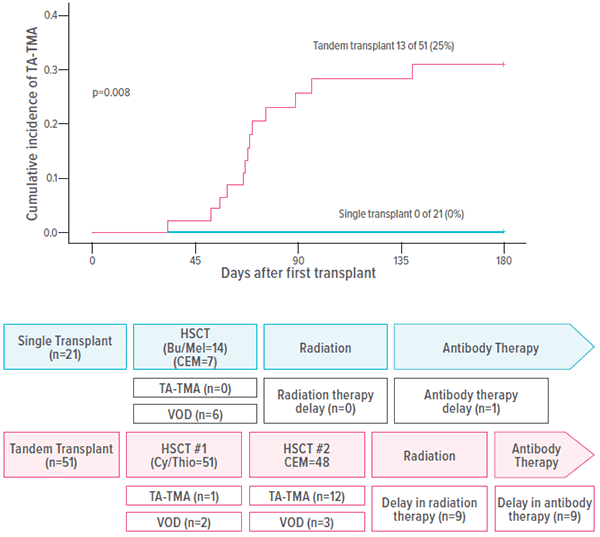Under-Diagnosed TA-TMA Presents Risk to Stem Cell Transplant Patients
Published December 2020 | Blood Advances
One of the most dangerous complications of hematopoietic stem cell transplantation (HSCT) is transplant-associated thrombotic microangiopathy (TA-TMA). Children with this complication often suffer kidney and heart damage as well as other dangerous effects and frequently spend more time in intensive care than those without TA-TMA.
Now, a 13-center study led by first author Christopher Dandoy, MD, MSc, and senior author Sonata Jodele, MD, helps define the true incidence of TA-TMA while supporting the need for ongoing systematic screening. Co-authors from Cincinnati Children’s and the University of Cincinnati also included Anna Klunk, Catherine Desmond, John Huber, Hannah Ingraham, Kasiani Myers, MD, Greg Wallace, DO, Adam Nelson, Pooja Khandelwal, MD, Ranjit Chima, MD, FAAP, Adam Lane, PhD, and Stella Davies, MBBS, PhD, MRCP.
Worldwide, clinicians perform more than 50,000 stem cell transplants a year to restore healthy blood cell production in conditions including leukemias, multiple sclerosis, sickle cell disease and severe combined immunodeficiency. However, before this project, many centers were inconsistent in screening for signs of TA-TMA.
Of 614 patients receiving a standardized set of tests, 98 (16%) were diagnosed with TA-TMA. Patients with underlying immune deficiencies showed increased risk for developing TA-TMA, notably those with primary hemophagocytic lymphohistiocytosis and Hurler syndrome. Also, patients with neuroblastoma who received combination carboplatin/etoposide/melphalan chemotherapy faced higher risk of TA-TMA.
“TA-TMA had been considered an infrequent complication of HSCT until the last five years,” Jodele says. “This study plays a significant role in raising our awareness about TA-TMA’s impact.”
The good news: In many cases a complement blockade treatment of eculizumab significantly improved outcomes.
“We believe that it is very important to identify high-risk patients early in the disease process, so that targeted intervention can be used,” Dandoy says.

Of 72 patients with neuroblastoma receiving HSCT, 13 who were scheduled to undergo a tandem transplant developed TA-TMA. Nine patients had a delay in receiving radiation and nine patients had a delay in antibody therapy.





